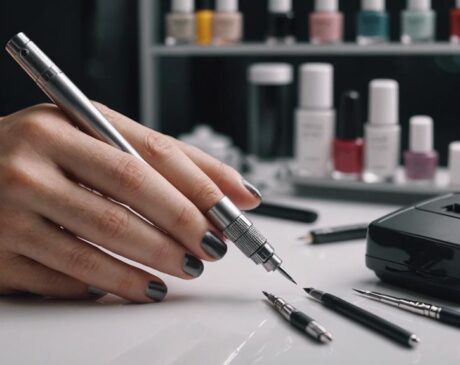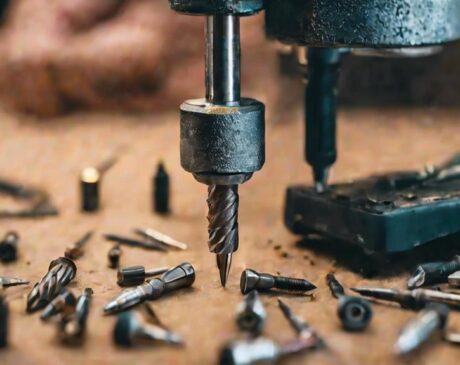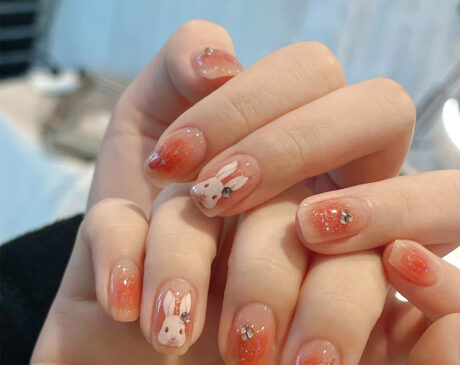What Do Nail Techs Use to Glue on Nails?

When it comes to nail art, adhesive products play a vital role in achieving stunning and long-lasting results. Nail technicians, commonly known as manicurists, rely on a variety of glues to hold artificial nails and decorations securely in place. If you’ve ever wondered, “What do nail techs use to glue their nails?” You’ve come to the right place. In this comprehensive guide, we’ll explore the different types of nail glues, their properties, and their application techniques. Finally, you’ll get a clear understanding of the products nail technicians use to create beautiful nail designs.
What do nail technicians use to glue their nails?
Nail technicians mainly use nail glues to adhere to artificial nails and nail decorations. These glues are specially formulated for nail application and offer great adhesion and durability. Let’s take an in-depth look at the various types of nail glues commonly used in the industry.
1. Cyanoacrylate-based nail glues
Cyanoacrylate-based nail glues, often referred to as instant glues or power glues, are a popular choice among nail technicians. This type of glue allows for a quick bond and is perfect for applying artificial nails. It creates a strong bond and ensures the longevity of the nail enhancer.
2. Brush on nail glue
Brush-on nail glue is another type of adhesive commonly used by nail technicians. As the name implies, it comes with a brush applicator that allows for precise and controlled application. This type of glue is usually suitable for applying small decorative items such as rhinestones and nail ornaments.
3. Gel nail glue
Gel nail glue is a versatile option that provides a longer working time compared to other types of nail adhesives. It has a gel-like consistency that allows nail technicians to accurately position artificial nails or decorations before curing the glue with UV or LED lights. Gel nail adhesive provides a strong and flexible bond.
4. Nail Bonding Sheets
Nail adhesive tabs are an alternative to traditional nail glue. These tabs are pre-cut adhesive strips that are applied to the back of the artificial nail. They are often used by nail technicians for temporary nail applications because they provide a non-permanent solution that can be easily removed without damaging the natural nail.
Application process
Now that we have covered the different types of nail adhesives, let’s discuss the application process that nail technicians follow to ensure a successful and long-lasting result.
Step 1: Nail Preparation
Before applying any nail glue, nail technicians carefully prepare the natural nails. They begin by pushing back the cuticle and gently filling the surface of the nail to create a smooth base. This step helps the glue adhere better to the nail and prevents warping or peeling.
Step 2: Choose the right glue
Choosing the right glue for your nails is essential to get the best results. The nail technician will consider various factors such as the type of artificial nail or trim being used, the client’s preferences, and the expected lifespan of the nail enhancer.
Step 3: Apply glue
Depending on the technique used, the nail technician applies a small amount of glue to the artificial nail or nail back trim. They make sure the glue is evenly distributed to prevent excess glue from seeping onto the natural nail.
Step 4: Nails or decorations are applied
After applying the glue, the nail technician carefully places the artificial nail or nail trim on the natural nail. They apply light pressure to ensure a strong bond. Precision and attention to detail in this step are essential to obtain a perfect and professional result.
Step 5: Curing the glue
For some types of glues, such as gel nail adhesives, a curing process is required. The nail technician uses a UV or LED light to cure the glue and form a strong bond. Curing times may vary, depending on the specific glue and manufacturer’s instructions. It is important to follow the recommended curing time to ensure the best results.
Step 6: Finishing
After the glue has completely dried or cured, the nail technician will apply the final touches. This includes filing and shaping the artificial nail, polishing the surface to make it smooth, and applying a top coat or other nail enhancer such as nail polish, gel polish or nail art design. These final steps enhance the overall look and durability of the nail enhancement.
Nail Polish FAQ and Answers
To further clarify the topic, here are some common questions about nail glue and their answers:
1. What if I accidentally spill nail glue on my skin?
If you accidentally spill nail polish on your skin, it is important to act quickly. Wash the affected area immediately with warm soapy water to remove the glue. Avoid peeling or pulling off the glue as this may cause skin irritation or damage. If irritation persists, consult a healthcare professional.
2. Can nail glue cause allergic reactions?
Yes, some people may be sensitive or allergic to some of the ingredients in nail glue. It is recommended that a patch test be performed before using a new nail gel. Apply a small amount of glue to a small area of skin and wait for any signs of irritation or allergic reaction such as redness, itching or swelling.
3. How long will the nail enhancement effect last with nail glue?
With proper application and care, nail enhancement results can last from two to four weeks depending on various factors such as the quality of the glue, the client’s nail health, and daily activities that may affect the nail. Regular maintenance and proper aftercare can extend the life of nail enhancements.
4. Can I remove nail enhancements that are glued at home?
Professional removal of nail enhancements is usually recommended to avoid damage to natural nails. However, if you choose to remove them at home, you can soak your nails in acetone or use a nail adhesive remover specifically designed for this purpose. Follow the instructions carefully and take some time to ensure a safe and gentle removal process.
5. Is nail glue harmful to natural nails?
Nail glue itself is not harmful to natural nails if used correctly and with proper care. However, aggressive removal methods or overuse of glue may cause damage or weakening of the nails. It is important to practice good nail care habits and seek professional help if any problems arise.
6. Can I reuse artificial nails that have been glued with nail glue?
It is not recommended to reuse artificial nails that have been glued with nail glue. The adhesive properties of the glue will weaken over time and reusing nails may result in poor adhesion, warping or potential damage to natural nails. It is best to use a new artificial nail each time you use it.




